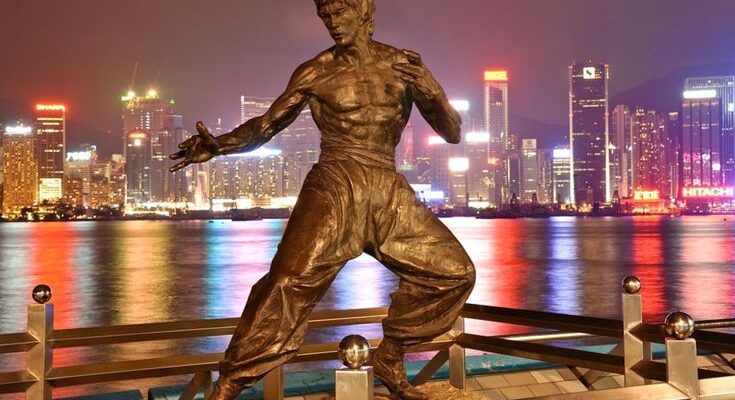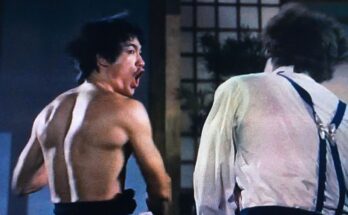San Francisco to Honor Bruce Lee with Statue in Chinatown: A Tribute to an American Icon
San Francisco, CA — A towering symbol of strength, unity, and heritage will soon rise in San Francisco’s Chinatown as the city prepares to unveil a bronze statue honoring martial arts legend Bruce Lee. The project aims to recognize not only Lee’s cinematic legacy but also his role as a civil rights trailblazer and an enduring figure of inspiration for all Americans.
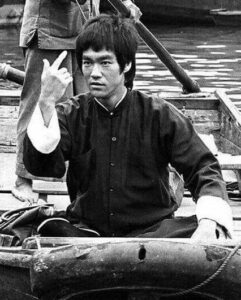
The six-foot-tall statue, designed by renowned South Korean sculptor Arnie Kim, will be installed in Portsmouth Square — the heart of Chinatown and the neighborhood where Lee was born in 1940. Posed in a prowling, action-ready stance, the statue captures Lee’s dynamic energy and unyielding spirit.
The initiative was sparked by Jeff Chinn, a longtime Bruce Lee memorabilia collector, and brought to life by the Chinese Historical Society of America (CHSA). The project has already secured a $50,000 commitment from the Rose Pak Community Fund, with an additional $200,000 being raised to complete the installation.
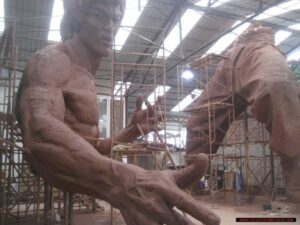
“This story is not just about what it means to be Chinese in America. It’s a story about mutual aid, solidarity, and ultimately, a story for all Americans,” said Justin Hoover, CHSA’s director of special projects, during the statue’s launch event last week.
The statue’s unveiling comes at a poignant time. In recent years, Asian Americans, Native Hawaiians, and Pacific Islanders have faced a troubling spike in hate crimes, especially following the COVID-19 pandemic. A 2023 national survey by Stop AAPI Hate found that nearly half of Asian Americans had experienced race-based discrimination that year alone. In San Francisco, Asian Americans make up approximately 34% of the population.
“This statue combats anti-Asian hate by uplifting togetherness and unity,” said CHSA Executive Director Janice Pettey. “It honors a man who not only defied Hollywood’s stereotypes but also built bridges between people of all backgrounds.”

Though Bruce Lee starred in just five feature films before his untimely death at age 32 due to an allergic reaction, his impact was seismic. He refused to conform to Hollywood’s limiting portrayals of Asian men and was famously passed over for roles — like the lead in Kung Fu — that instead went to white actors in yellowface. Yet, Lee persisted, carving out his own path and ultimately reshaping global perceptions of Asian identity and masculinity.
Pettey highlighted Lee’s lesser-known contributions to civil rights, noting that his martial arts school welcomed students from all races — a revolutionary act at the time. “Bruce Lee was a unifier,” she said. “He embraced people of all races and genders, and he gave them visibility in his films. One of his most iconic co-stars was none other than NBA legend Kareem Abdul-Jabbar.”
The statue will also serve as a tribute to Lee’s most celebrated role — his character’s final confrontation with the villain Han from Enter the Dragon (1973), a film Lee never lived to see released. He died just one month before its premiere.
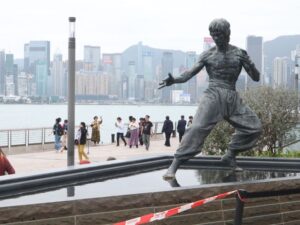
Beyond celebrating Lee’s legacy, the statue is part of broader efforts to elevate Chinese American history in the Bay Area. In nearby Oakland, city officials are considering renaming the Lake Merritt BART station to “Oakland Chinatown” to reflect the neighborhood’s deep cultural roots.
“Having a public statue to educate others about Bruce Lee’s San Francisco Chinatown roots and his Chinese American heritage will serve as a living tribute to his story — not just as a martial artist and filmmaker, but also as a philosopher, businessman, father, and husband,” said Pettey.
With current debates surrounding birthright citizenship in the U.S., CHSA also aims to honor figures like Bruce Lee and Wong Kim Ark — the San Franciscan whose Supreme Court case helped define the constitutional right to citizenship by birth.
“These are heroes whose voices we must amplify,” Pettey said. “Their stories are vital to understanding the Chinese American experience — and the American story as a whole.”
